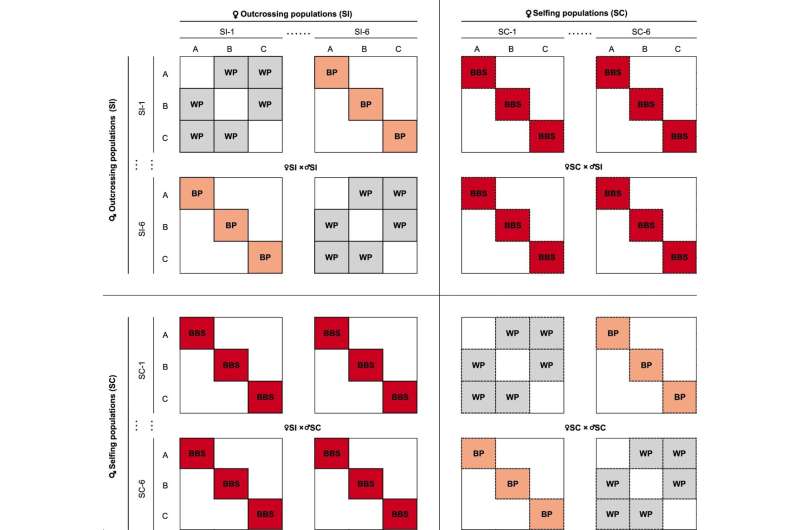From cross to self-pollination: Examining how plants develop different routes to replication

There are flowering plants that have the ability to self-pollinate, meaning that they can fertilize themselves without a partner. A biological advantage of self-pollination, also known as “selfing”, is that one individual of these plants can single-handedly populate entire areas. However, selfing also has clear negative consequences for the plants—first and foremost the loss of genetic variability and biological fitness of the species. Thus, many flowering plants have mechanisms in place to prevent selfing, for example by recognizing and rejecting their own pollen. Biologists refer to this as self-incompatibility.
From time to time, it happens that self-incompatibility is naturally lost and that plants acquire the ability to self-pollinate. Known cases include, for example, some cruciferous species. In this plant family, the genes that are crucial for making a plant self-incompatible are well known. Until now, researchers assumed that loss-of-function mutations at these “S-genes” explained loss of self-incompatibility. In a crossing study published in Nature Communications, evolutionary ecologists from Konstanz present evidence for a different mechanism in sand cress (Arabidopsis lyrata), involving what is known as a modifier gene.
“Self-pollinators have an increased potential to establish self-sustaining populations outside their natural range as invasive species and can survive without insect pollinators. Hence, a better understanding of the mechanisms that can lead to cross-pollinators becoming self-pollinators is of high ecological relevance,” explains Marc Stift, evolutionary ecologist at the University of Konstanz and one of the study authors.
Something didn’t quite fit
That a modifier gene—i.e. a gene that affects the expression of another, spatially separated gene—might play a role in sand cress had already been suspected. However, so far there were no data to confirm this idea. The Konstanz-based researchers therefore conducted an extensive experiment: They crossed individuals from self-incompatible and self-compatible sand cress populations in all combinations possible. Afterwards, they determined the breeding system of more than 1500 progeny and linked this to genetic data about the S-gene variants (S-alleles) that these progeny inherited.
One of the researcher’s findings was that crosses between cross-pollinators and self-pollinators can lead to both forms of breeding system in the progeny, with the S-alleles from the self-incompatible partner being crucial. Thus, also in sand cress, the S-gene plays a role in the loss of self-incompatibility. However, the researchers did not find evidence that this functional role was explained by a loss-of-function mutation.
In other words, the self-recognition genes were somehow involved in the breakdown of self-incompatibility in selfing sand cress, but not by the same mechanism as known from other species. On the contrary: “In fact, our experiments revealed progeny with identical self-recognition genes, of which some were self-incompatible, and others were completely self-fertile,” says Yan Li, who conducted the crossing experiments for her doctoral studies in Konstanz. This provides strong evidence for the previously unproven alternative mechanism involving a modifier gene. “Now we will have to find out if this mechanism is unique to sand cress, or if it has also led to the transition from cross-pollinator to self-pollinator in other plant species,” Stift adds.
More information:
Yan Li et al, Breakdown of self-incompatibility due to genetic interaction between a specific S-allele and an unlinked modifier, Nature Communications (2023). DOI: 10.1038/s41467-023-38802-0
Citation:
From cross to self-pollination: Examining how plants develop different routes to replication (2023, June 16)
retrieved 16 June 2023
from https://phys.org/news/2023-06-self-pollination-routes-replication.html
This document is subject to copyright. Apart from any fair dealing for the purpose of private study or research, no
part may be reproduced without the written permission. The content is provided for information purposes only.
For all the latest Science News Click Here
For the latest news and updates, follow us on Google News.

